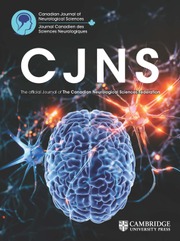No CrossRef data available.
Article contents
Marital Status and Parkinson Disease in Eastern Compared to Western Countries: A Systematic Review and Meta-Analysis
Published online by Cambridge University Press: 13 January 2025
Abstract
Parkinson disease (PD) is a neurological disorder that affects more than 10 million people worldwide, impacting both quality of life and marital relationships. Divorce rates are higher in Western compared to Eastern countries. However, it is unclear if there are differences in marital status after PD onset between the two regions.
We searched MEDLINE and Embase from inception to March 31, 2024. Original studies discussing marital status in participants with PD were included. An unmarried status includes single, widowed, divorced or separated. Outcomes included the prevalence of being unmarried, measured as proportions, and the risk ratio (RR) of being unmarried in participants with PD relative to controls.
Out of 567 studies screened initially, 55 studies involving 3,723,966 participants were included. The prevalence of being unmarried was evaluated in 55 studies (25.16%; 95% CI: 21.52–29.18). The prevalence of being unmarried was significantly higher in countries in the West compared to the East (28.83%; 95% CI: 25.09–32.89 vs 17.47%; 95% CI: 12.10–24.57, p < 0.01). Compared to controls, the risk of being unmarried in PD participants after the onset of PD was significantly higher in the East (RR: 1.21, 95% CI: 0.91–1.60) compared to the West (RR: 0.87, 95% CI: 0.65–1.15).
Our meta-analysis showed significantly higher rates of being unmarried in Western compared to Eastern countries. After PD onset, participants in the East were at significantly higher risk of being unmarried compared to participants in the West, suggesting that differences in cultural practices, societal norms and healthcare systems may affect marital status outcomes in PD participants.
Résumé
État matrimonial et maladie de Parkinson dans les pays asiatiques par rapport aux pays occidentaux : une revue systématique et une méta-analyse.
La maladie de Parkinson (MP) constitue un trouble neurologique qui touche plus de 10 millions de personnes dans le monde et qui affecte leur qualité de vie et leurs relations conjugales. Les taux de divorce sont aussi plus élevés dans les pays occidentaux que dans les pays asiatiques. Toutefois, il n’est pas clair s’il existe des différences d’état matrimonial entre ces ensembles de pays après l’apparition de la MP.
Nous avons effectué des recherches dans MEDLINE et Embase depuis le début de cette étude jusqu’au 31 mars 2024. Des études originales portant sur l’état matrimonial des participants atteints de la MP ont été incluses. Ici, l’état de « célibataire » englobait le fait d’être célibataire, veuf, divorcé ou séparé. Nos résultats ont donc compris la prévalence du célibat, mesurée en proportion, et le rapport de risques (RR) du célibat chez les participants atteints de la MP par rapport à des témoins.
Sur les 567 études sélectionnées initialement, 55 d’entre elles impliquant 3 723 966 participants ont été incluses. La prévalence du célibat a donc été évaluée dans le cas de ces 55 études (25,16 % ; IC 95 % : 21,52–29,18). Il est à noter que cette prévalence était notablement plus élevée dans les pays occidentaux que dans les pays asiatiques (28,83 % ; IC 95 % : 25,09–32,89 contre 17,47 % ; IC 95 % : 12,10–24,57 ; p <0,01). Par rapport aux témoins, le risque d’être célibataire chez les participants après l’apparition de la MP était considérablement plus élevé au sein des pays asiatiques (RR :1,21 ; IC 95 % : 0,91–1,60) qu’au sein des pays occidentaux (RR : 0,87 ; IC 95 % : 0,65–1,15).
Notre méta-analyse a montré des taux de célibat notablement plus élevés dans les pays occidentaux que dans les pays asiatiques. Après l’apparition de la MP, les participants des pays asiatiques ont donné à voir un risque nettement plus élevé d’être célibataires que les participants issus des pays occidentaux, ce qui suggère que des différences en matière de pratiques culturelles, de systèmes sociétaux et de systèmes de santé peuvent affecter l’évolution de l’état matrimonial des participants atteints de la MP.
- Type
- Original Article
- Information
- Copyright
- © The Author(s), 2025. Published by Cambridge University Press on behalf of Canadian Neurological Sciences Federation


